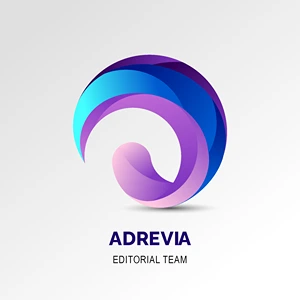People wonder what is metaverse thing all about
A technically correct definition of a metaverse is a collective virtual shared place that is produced when virtually augmented physical reality and digital reality meet. For the sake of simplicity, you might think of a metaverse as the next generation of the internet, which originally consisted of distinct bulletin boards and independent web destinations. In due time, these locations evolved into locations on a shared virtual environment, which is analogous to the future development of a metaverse.
A metaverse is not independent of the devices it runs on, nor is it owned by a single provider. It is a decentralised form of the internet-based economy that is powered by cryptographic currencies and non-fungible tokens (NFTs).
Metaverses are combinatorial innovations, which means that in order for them to work, many technologies and trends are required. Virtual reality (VR), augmented reality (AR), flexible work methods, head-mounted displays (HMDs), an augmented reality cloud, the Internet of Things (IoT), 5G, artificial intelligence (AI), and spatial computing are some of the developments that are contributing to this development.
The metaverse may be understood as a strategic technological trend because of four significant innovations:
-
The first new thing is Web3, which is a new stack of technologies that may be used for the building of decentralised web apps. These applications provide users the ability to govern their own identity and data. Both Web3 and metaverse are complementary components of a community or ecosystem characterised by the transfer of value between individuals, groups, or organisations, in any combination.
-
The second breakthrough is known as “spatial computing,” and it consists of a three-tiered technological stack that allows people to experience the convergence of the digital and physical worlds.
-
The digital twin of a person (DToP) not only serves as a reflection of a one-of-a-kind person, but it also provides a near-real-time synchronised multipresence. This provides the user with the opportunity to be present in various locations at the same time in both digital and physical areas.
-
The digital twin of a customer (DToC) is a dynamic virtual representation of a client that replicates and learns to emulate and predict behaviour. It is a subset of the digital twin of a product (DToP). Individuals, personas, groups of people, or even robots might constitute a customer.
There is a lot of enthusiasm about the concept of the metaverse, which is being fueled by technology businesses that are anticipatorily claiming to be metaverse companies or constructing a metaverse in order to improve or augment the digital and physical worlds of people.
At some point in the future, the metaverse will make available possibilities and business models that are permanent, decentralised, collaborative, and interoperable. These features will make it possible for businesses to expand their digital operations. But possibilities in the metaverse are already starting to emerge, both for individuals and for businesses. Take, for example:
-
J.P. Morgan is the first bank to establish a presence in the metaverse. The company estimates that there is a market potential worth one trillion dollars and is interested in virtual real estate.
-
Automobile dealerships could keep a limited stock on hand of certain vehicles and use spatial computing, specifically the augmented reality cloud, to make it appear as though the vehicle’s interior and exterior characteristics are being digitally changed in real time to showcase more options.
-
It is possible to instruct personnel on how to deal with risks through the use of games, without really putting them in harm’s way.
-
Customers can engage in conversation with DToCs and digital people to get assistance in a variety of domains, including financial transactions, concierge shopping experiences, and patient health monitoring.
-
The creation of enhanced chances for employee engagement, collaboration, and connection inside a company is made possible through the use of virtual workplaces. (An integral part of hybrid work is already consisting of virtual meetings, which are made possible by technology related to the metaverse.)
According to Resnick, “the coming one to three years will be a time of learning, exploring, and getting ready for a metaverse with restricted implementations.” Because the potential financial and reputational losses associated with early investments are not yet completely understood, we recommend exercising extreme caution.
For the time being, however, following measures will assist you begin to sketch out a strategy that involves technology related to the metaverse:
-
Investigate areas in which metaverse technology could be able to improve digital business or provide new goods and services.
-
Build goods and solutions for the metaverse through a pipeline of combinatorial invention rather than searching for a “killer app.”
-
By analysing existing high-value use cases, you can find possibilities that are inspired by the metaverse.
-
Invest in certain emerging metaverses with extreme caution, and safeguard your company’s image by pro-actively adopting a data governance, security, and privacy policy to secure the personal information of your customers and employees.
In short
-
There is currently no such thing as “the” metaverse. A metaverse is currently comprised of a number of developing technologies that promise to deliver the next level of interaction in both the virtual and real worlds.
-
A metaverse is not independent of the devices it runs on, nor is it owned by a single provider. It is a decentralised virtual economy that operates with the help of digital currencies and NFTs.
-
It is still too early to tell which metaverses will be sustainable in the long run, therefore businesses should proceed with caution when considering whether or not to invest in a particular one.
 ADREVIA
ADREVIA










Adrevia Editor Team
A team of editors and writers who are passionate about writing and editing articles. The team is mainly responsible for creating engaging articles for our users and providing more information on how businesses can be improved with writing.